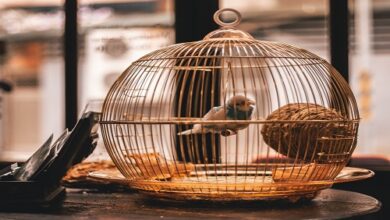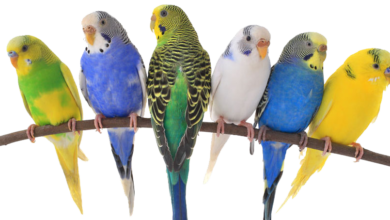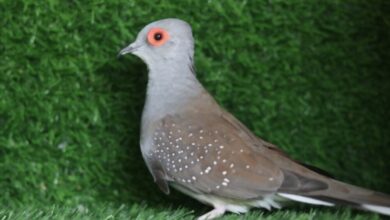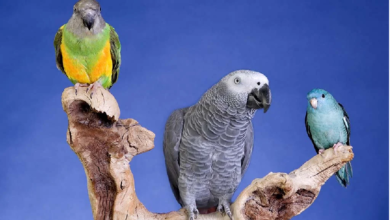Gouldian finch

Originally from Australia, the Gouldian finch displays magnificent plumage colors. It is also a bird with a very pleasant temperament, gratifying its entourage with very beautiful songs, and which prefers calm environments.
Family :Estrildidae
Gender :Erythrura
Weight :12 gr
Cut : From 13cm to 15cm
Life expectancy :From 5 to 8 years old
The life expectancy of the Gouldian finch is between 5 and 8 years on average.
Geographical area
The Gouldian finch is native to the northern regions of Australia, especially that of Kimberley in northern Western Australia, where the largest numbers are found.
In its natural environment, the Gouldian finch inhabits wooded savannahs near wetlands.
The species is much appreciated as a domestic bird, both in its country of origin and in Europe and the United States.
Breed History
The description of the Gouldian finch was made by John Gould, the British ornithologist, and naturalist who gave it its name, in 1844. He then took part in an ornithological expedition. About ten years earlier, the first specimens had been observed by French zoologists and naturalists Jacques Bernard Hombron and Honoré Jacquinot.
The species began to be imported into Europe 4 decades later, first to England, then to France. The flows continued until 1959 and Australia’s ban on the export of its wild animals.
Today, the natural habitat of the Gouldian finch in Australia is damaged by disasters (wildfires), deforestation, poaching, and pollution.
Physical peculiarities
The Gouldian finch has superb plumage colors , much more marked in the male. Wild individuals have a black or red head, a green back and a purple chest.
Until about 40 days of age, young birds have a gray head, tan abdomen, and bottle greenback, before changing to adult colors. Among the physical peculiarities of the chicks, we also note the presence of blue papillae reflecting the light located at the corner of the beak. They have a very specific function, since they allow parents to feed them more easily at night.
In captivity, there are a multitude of mutations and combinations: black, red, orange, or white head, green back (or pastel green), yellow, blue (or pastel blue), silver, purple, white, blue, or lilac chest.
Behavior and characte
The Gouldian finch is a lively and sociable bird. He is a pleasant companion, who however does not appreciate intrusions into his direct environment (his cage), or agitation. Itself rather discreet, it can nevertheless emit pretty songs (mainly the male).
In the wild, Gouldian Finches evolve in very large groups, often made up of a thousand individuals, or even many more.
Feed
The Gouldian finch feeds on seeds from plants of the genus Triodia. Its diet also includes small adult insects or larvae.
To feed a Gouldian finch in captivity, you can get commercially available seed mixtures: canary seed, millet, hempseed… It is also given food mash containing eggs and bread. A cuttlebone left at his disposal in his cage allows him to ensure calcium intake.
Its diet should be supplemented with fruit and vegetables (apple, banana, zucchini, etc.), which must be removed from the cage as soon as they are no longer fresh.
Reproduction
In the Gouldian finch, the breeding season generally begins in October and ends in March.
The female lays 2 to 3 times a year, with 4 to 8 eggs per clutch. Brooding is ensured alternately by the 2 parents for 2 weeks, then they feed the chicks by providing them with seeds and small insects.
Young Gouldian finches begin to leave the nest at 20 days of age, before becoming independent around 40 days.
Health
The most common diseases in the Gouldian finch are infestation by air sac mites and baldness.
Air sac mites are microscopic mites that thrive in the respiratory system of the bird, which then suffers breathing difficulties.
Baldness mainly affects the back of the head and the top of the neck, but can also affect other areas of the body. It can be caused by mites, a genetic anomaly, or an unsuitable diet.
Way of life
Rather than a single Gouldian finch, it is advisable to keep a couple, because it does not like loneliness and needs to be stimulated. The ideal dimensions of a cage for 2 birds are 60 cm long and 40 cm high.
Varied perches and closed nests are to be placed in the cage, as well as feeders and drinkers to be filled and cleaned regularly. These should be placed as close as possible to the door so as not to disturb the birds too much when handling them.






